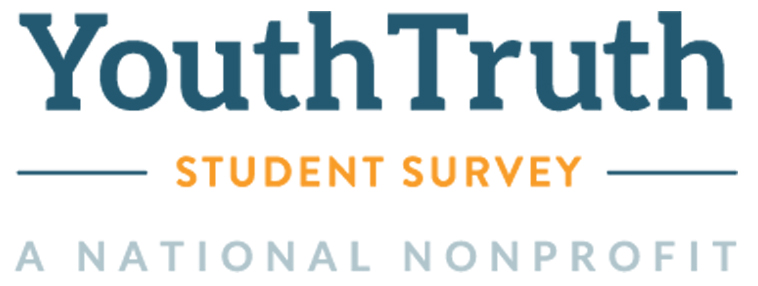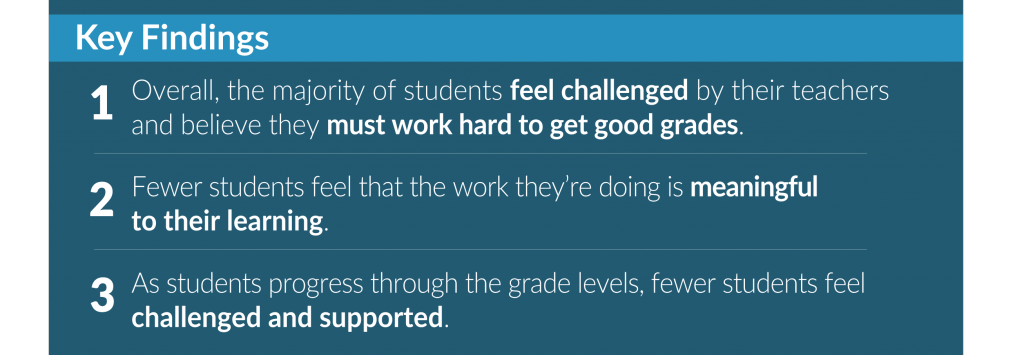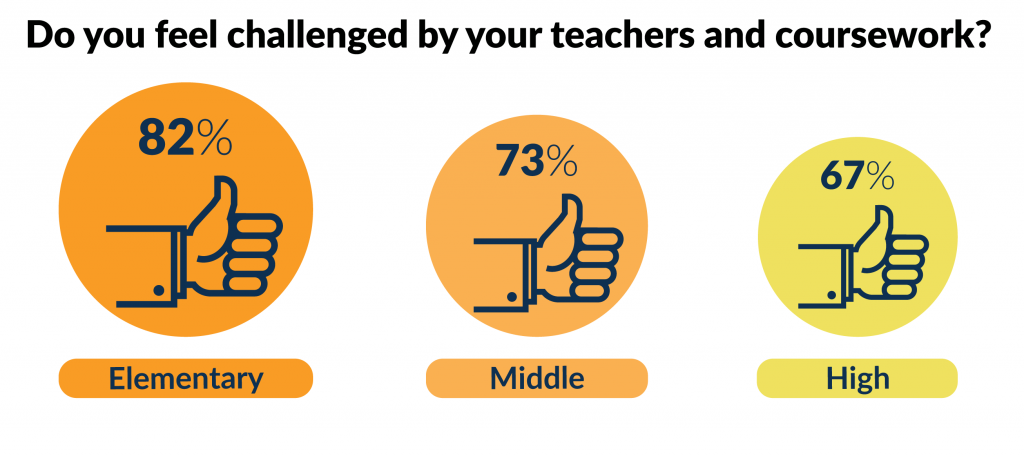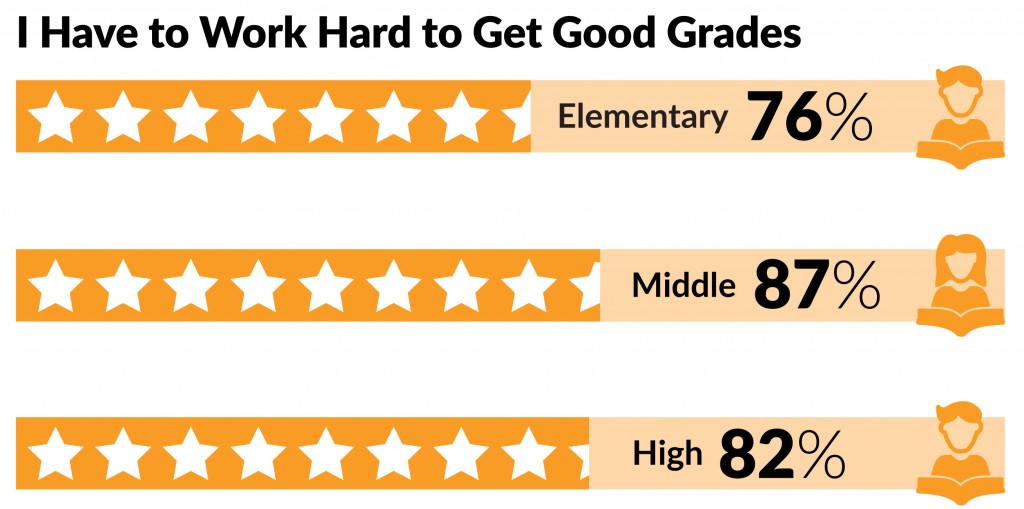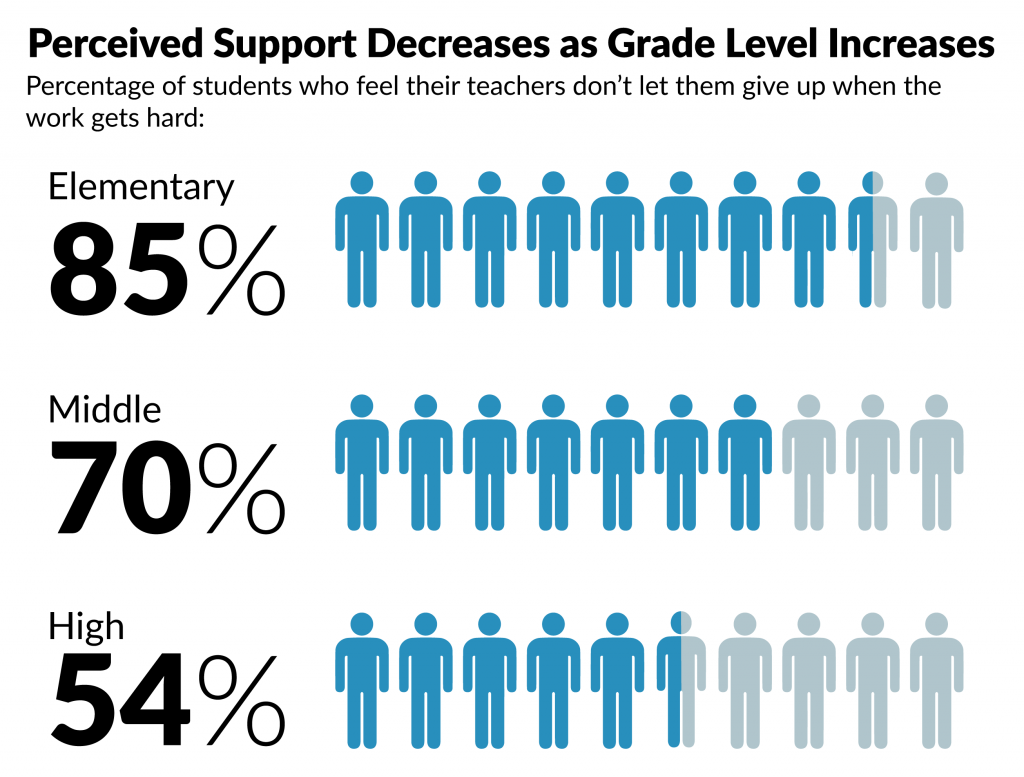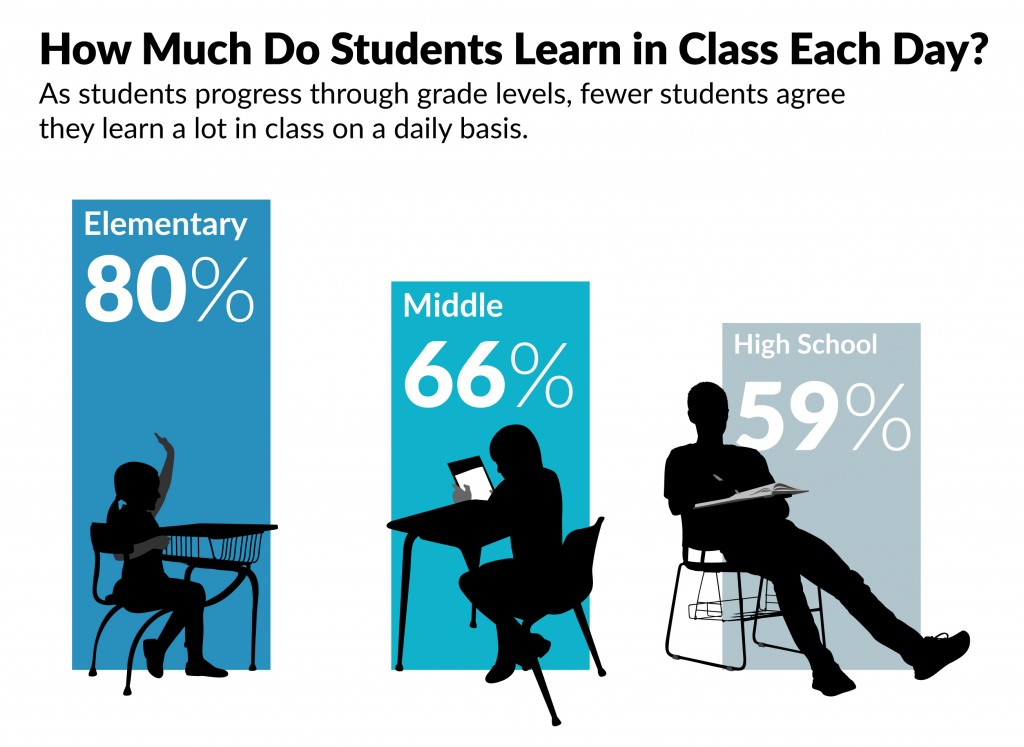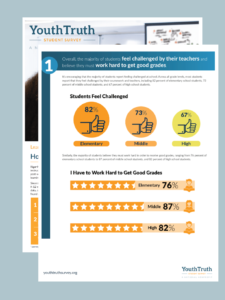Rigor has become a buzzword in education – and with good reason.
Rigorous coursework and instruction are fundamental to student engagement and achievement, and a critical part of setting students up for post-secondary success. The majority of students today want to go to college, and it’s important that their K-12 learning experiences prepare them for the academic challenges they will face there.
Since student perception data is empirically linked to and predictive of academic outcomes, understanding students’ experiences in their K-12 classes can give educators and school leaders rapid feedback to inform instructional practices. We analyzed data, collected from nearly 183,000 public school students across the country in grades three through twelve, and found a number of interesting results:
